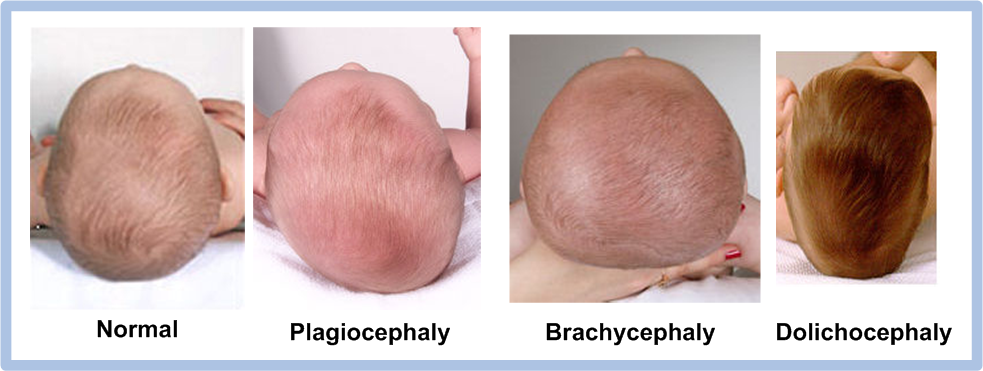 An astonishing one-in-sixty babies are believed to have ‘Flat Head Syndrome’ (FHS), also known as plagiocephaly. Many mothers don’t realise that their babies’ heads are misshapen because they, naturally, see their babies as perfect. It is often only when they have a second child that they notice discrepancies between their two children, or even when their child is older and they find it difficult to wear bicicle helmets, for instance, that they notice that anything is amiss and seek medical advice. Midwives and Health Visitors are often rushed and are sometimes misinformed or even ignorant about FHS and so don’t properly advise new mums even if they spot something is a bit abnormalwith the shape of a baby’s head.
An astonishing one-in-sixty babies are believed to have ‘Flat Head Syndrome’ (FHS), also known as plagiocephaly. Many mothers don’t realise that their babies’ heads are misshapen because they, naturally, see their babies as perfect. It is often only when they have a second child that they notice discrepancies between their two children, or even when their child is older and they find it difficult to wear bicicle helmets, for instance, that they notice that anything is amiss and seek medical advice. Midwives and Health Visitors are often rushed and are sometimes misinformed or even ignorant about FHS and so don’t properly advise new mums even if they spot something is a bit abnormalwith the shape of a baby’s head.
It’s far more common in boys than girls; it develops usually at around four to eight weeks of age, and is more common amongst babies of low birth weight or who were born prematurely.
So how is FHS caused, and can it be avoided or corrected?
In a (very) few cases, FHS is caused by a difficult birth, often with too much time compressed in the birth canal; sometimes it is caused by problems during pregnancy including a lack of amniotic fluid in the sac. It can also be caused by forceps delivery.
More often, though, the causes are avoidable and happen after birth. Placing a child on its back in the same position night after night, combined with a lack of tummy time during the day will distort the growth of the skull. Letting a baby spend long periods of time in their carseat can also lead to FHS. Of course, babies should sleep on their backs in their cots (to minimise the risk of cot death, which is infinitely more serious than FHS), if this isn’t counter-balanced by time spent on the baby’s tummy during the day when he is awake the head can become flat.
Babies’ skulls are soft (they’re designed like that so that they can get out of you!) so if they’re exposed to pressure on any one spot for long periods of time, they can develop a flat area. The flat area normally corrects itself, when the baby starts to spend more time on their tummies naturally, such as when they start to crawl and move independently. But if it doesn’t, there are a number of ways you can help to re-shape the head yourself.
If they’re younger than five months then simply re-positioning your baby in their sleep will help if they’re very young (e.g. if the right side of their head is a bit flat, simply turn their head slightly so that they are still lying on their backs but the left side of their head is touching the mattress. Give them plenty of tummy time (i.e. let them play whilst lying on their tummy) during the day when they’re awake.
If that doesn’t work, there are special molded helmets that are said to help the skull to grow into the more natural, rounded shape. These are only available privately, though, and for quite a cost.
Some doctors have expressed concern about these devices, sold to people through private companies, because they fear that such companies will not check for underlying medical conditions that might have caused the flat-head appearance and that putting a molded helmet on such children could cause more harm than good.
FHS is only a cosmetic problem; it doesn’t affect the brain or intelligence in any way and the sort of difficulties it causes are relatively minor (such as the aforementioned problems getting bike helmets to fit) though bullying is not uncommon in older children with noticeably flat heads.
Tags: flat head Flat Head Syndrome flat head syndrome treatments it How to avoid Avoid flat head plagiocephaly What is flat head syndrome